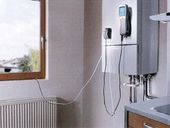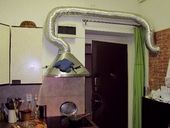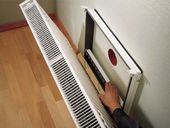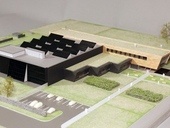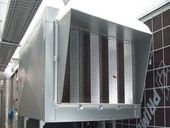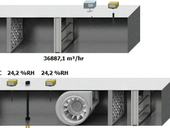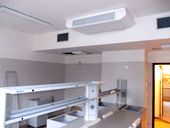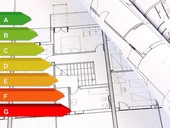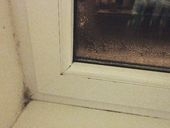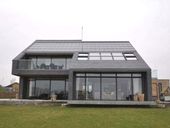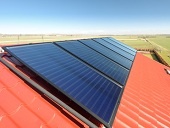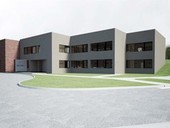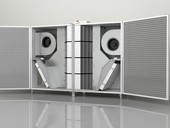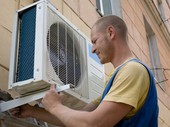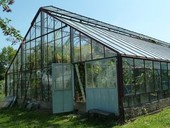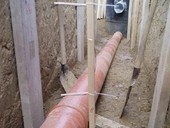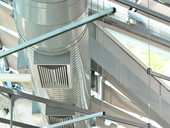In practice we constantly fix difficulties in applying the conditions for the correct placement of appliances category B, that take away combustion air from the sorrounding of the appliance and the flue gas is removed through the flue and chimney above the roof. It is important to mention that this category of appliance participates most in flue gas poisoning including poisoning with fatal aftermath, occurring in tens of cases in the Czech Republic for the year. It is caused by the incorrect application of regulatory requirements, ie in particular the TPG 704 01.
Archiv článků od 10.12.2012 do 8.7.2013
In practice we constantly fix difficulties in applying the conditions for the correct placement of appliances category B, that take away combustion air from the sorrounding of the appliance and the flue gas is removed through the flue and chimney above the roof. It is important to mention that this category of appliance participates most in flue gas poisoning including poisoning with fatal aftermath, occurring in tens of cases in the Czech Republic for the year. It is caused by the incorrect application of regulatory requirements, ie in particular the TPG 704 01.
In practice we constantly fix difficulties in applying the conditions for the correct placement of appliances category B, that take away combustion air from the sorrounding of the appliance and the flue gas is removed through the flue and chimney above the roof. It is important to mention that this category of appliance participates most in flue gas poisoning including poisoning with fatal aftermath, occurring in tens of cases in the Czech Republic for the year. It is caused by the incorrect application of regulatory requirements, ie in particular the TPG 704 01.
The University Centre of Energy Efficient Buildings is a newly established interdisciplinary research institute of Czech Technical University focused to energy efficient buildings having the healthy indoor environment that, at the same time, are environmentally friendly. The main objective for the Centre establishment is the development of technologies for the energy demand reduction and the efficient improvement of natural sources concerning new constructions and reconstructions of existing buildings. The objective is to be achieved by the holistic approach, the expert knowledge concentration from the field of architecture, construction, mechanical engineering, information technologies, and hygiene of indoor environment and the top instrument equipment of the Centre.
Acoustic microclimate is an important part of shaping not only inside but also the outside of buildings. The article presents a case study problems associated with measuring equivalent sound pressure levels in outdoor spaces to be protected buildings. In the text of the methods to remove negative acoustic performance, or what building solutions can be used for treatment of non-compliant, measurement findings.
This paper describes a general principle of air conditioning unit. Individual components and their functions of AHU are described. Finally, it is a model of AHU and the algorithm that is implemented as a software module in a programming environment. The created module is used for functional analysis and evaluation of energy behavior AHU.
The European Union is committed to reducing energy consumption in the built environment. Since the heating, ventilation and air conditioning (HVAC) represents approximately 11% of the total electricity consumption in Europe, these systems are an important part of the commitment of the EU. In this article, we discuss two specific aspects of HVAC energy efficiency, both are based on that understanding how the commercial buildings work in real life is the first step towards reducing energy consumption.
Acoustic microclimate is an important part of shaping the internal environment of buildings. The effect of noise on the listener is becoming an increasingly important issue that must be addressed. Great emphasis must be placed on indoor climate, not only in the home, but also in the work environment, where the interior acoustics greatly affects the quality and efficiency of operations carried out. Although the health consequences of excessive exposure effects do not show immediately, unlike expressions fluctuations in temperature that our body records almost immediately, long-term exposure to noise damages the health of the individual, not only physically but also mentally. Troubleshooting Sound microclimate has nowadays many ways, both active and passive, and becomes an increasingly important component in the search for optimal solutions and balance of all components of the internal microclimate.
In connection with the implementation of the revised European Directive 2010/31/EU on the energy performance of buildings, certain legislative provisions such as Decree No. 148/2007, Coll. Replaced by Decree No. 78/2013, Coll. are currently amending. This article is focused on the changes associated with the energy certification of buildings, the "ENB", from the perspective of changes in the evaluation ENB.
This paper examines the occurrence of extreme boundary conditions in the internal microclimate in the context of the intended use and structural design and technical equipment of the building. It refers to the occurrence of extreme conditions of the internal microclimate and the effects on constructions of buildings.
Achieving quality and healthy indoor environment in buildings with very low energy consumption means a holistic attitude from the initial design of the building to its operation. This attitude to design also raises the need for a holistic attitude to the measurement / evaluation of the structures, both in terms of quantitative indicators and qualitative.
Condensation of water vapor in regular heat recovery heat exchangers is not an exceptional state, but its influence is usually neglected. In the article is described possible efficiency increase due to rise of transferred heat flux between cooled and heated air stream caused by latent heat from condensation of water vapor contained in air.
The article deals with older refrigeration and air conditioning equipment which were originally using refrigerants that are nowadays already forbidden to use during repairs and for refilling systems due of envi-ronmental reasons. The text provides general information and knowledge gained from the experiment about phenomena associated with replacement of ecological refrigerant for the original refrigerant.
This article summarises the results of research on work intensity in special greenhouses based on measurement of heart rate in correlation with microclimatic environmental working conditions in these greenhouses during the summer period of the year. According to the results of measurement the indoor conditions represented by operative temperature value were higher than value required by low in Czech Republic. In order to these facts, the general conclusion of this study is proposal appropriate operation mode for workers in so specific environment conditions.
The contribution describes the building and configuration of a newly built ground heat exchanger (GHE), realized under the grant No. 3206/2011/G1 provided by Universities Development Fund of Ministry of Education, Youth and Sports CR. This GHE is designed as an accessory of experimental low-energy dwelling of FME BUT Brno exploited for education in the area of alternative HVAC systems. All relevant operating parameters (including temperature stratification of soil) are continuously monitored. Data acquired this way will be used for validation of recently developed numerical models as well as for later design and energy assessment of GHEs.
The paper is focused on key aspects of design optimization of HVAC units from their energy consumption and from life cycle costs LCC point of view. This paper demonstrates and compares results from life cycle costs calculation with bonds to unit design including optimizing these costs in several cases of HVAC units. Last part of paper is dedicated to other key areas which were neglected until now, like continuous and appropriately monitoring of energy consumption of HVAC unit in real operation and continuous comparison with designed values. Therefore it allows effective interventions of operating staff and monitoring by owner or management.
Directive 2010/31/EU of the European Parliament and of the Council on the energy performance of buildings requires that new buildings since 2018 (public buildings) and 2020 (all buildings) respectively were buildings with nearly net zero energy buildings. The requirement relates to the all technical systems of the buildings. The paper presents possible solutions in ventilation and air conditioning field in these buildings and presents considerations about possible developments with regard to the requirement of reducing energy consumption.
zpět na aktuální články
